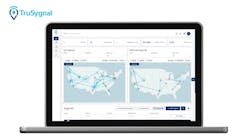There are so many similarities between aviation and trucking. Both industries have a need for operators (pilots or drivers), mechanics, dispatchers and both groups are anticipating a severe shortage of personnel due to an aging demographic and regulatory changes.
According to Boeing, more than 25,000 new pilots are needed annually to fill current and future needs. The American Trucking Industry predicts a need of about 30,000 annually to fill truck seats. Additionally, aviation’s female pilot population is about six percent, which is similar to the trucking industry’s percentage of female professional drivers.
The aviation industry isn’t waiting around to recruit these students any longer. I found some amazing examples of industry and public school partnerships that could, and SHOULD be adopted by the trucking industry. If not, we’ll fall even further behind aviation.
The Aviation Career Education (ACE) Academy in Memphis has hosted a summer academy camp for students ages 14-18. The camp isn’t just focusing on flying; they expose students to jobs as mechanics, flight crews, and even administration. The youths were encouraged to sit in the cockpit of a Boeing 777 and experienced flight through simulators.
Students are able to tour an operations center, an air traffic control tower, or a maintenance hanger, and speak with flight schedulers, maintenance controllers, and, of course, pilots.
The Wooddale High School in Memphis has an optional aviation program. Approximately 90 percent of the students are enrolled in the aviation curriculum. Wooddale is the only public high school in Tennessee to offer an aviation program, which allows students to earn a private pilot certificate at no cost (to the student).
Classes include the Theory of Flight, Introduction to Aerospace, and more. They can get hands-on training in a Cessna 172 owned by a FedEx pilot who donates the use of his airplane to the students. Flight instructors take the students in pairs for three hour trips on weekends in order to log the required number of flight hours needed to obtain a private pilot’s certificate.
Across the country in southern California, high school students are also learning about the aviation industry. DaVinci High School youths are learning how to fly before they earn their driver’s license. They first use simulators to plan a route, calculate magnetic headings, and estimate time and distance for the trip.
Math, science, and geography are being taught in a practical way that relates to the aviation industry, while exposing these students to potential careers as pilots, mechanics, and other airline positions.
Maybe it’s time for the trucking industry to bring simulators into high schools and middle schools. Maybe it’s time for the trucking industry to invite youngsters into terminals, truck stops, and weigh stations to learn about careers in transportation.


